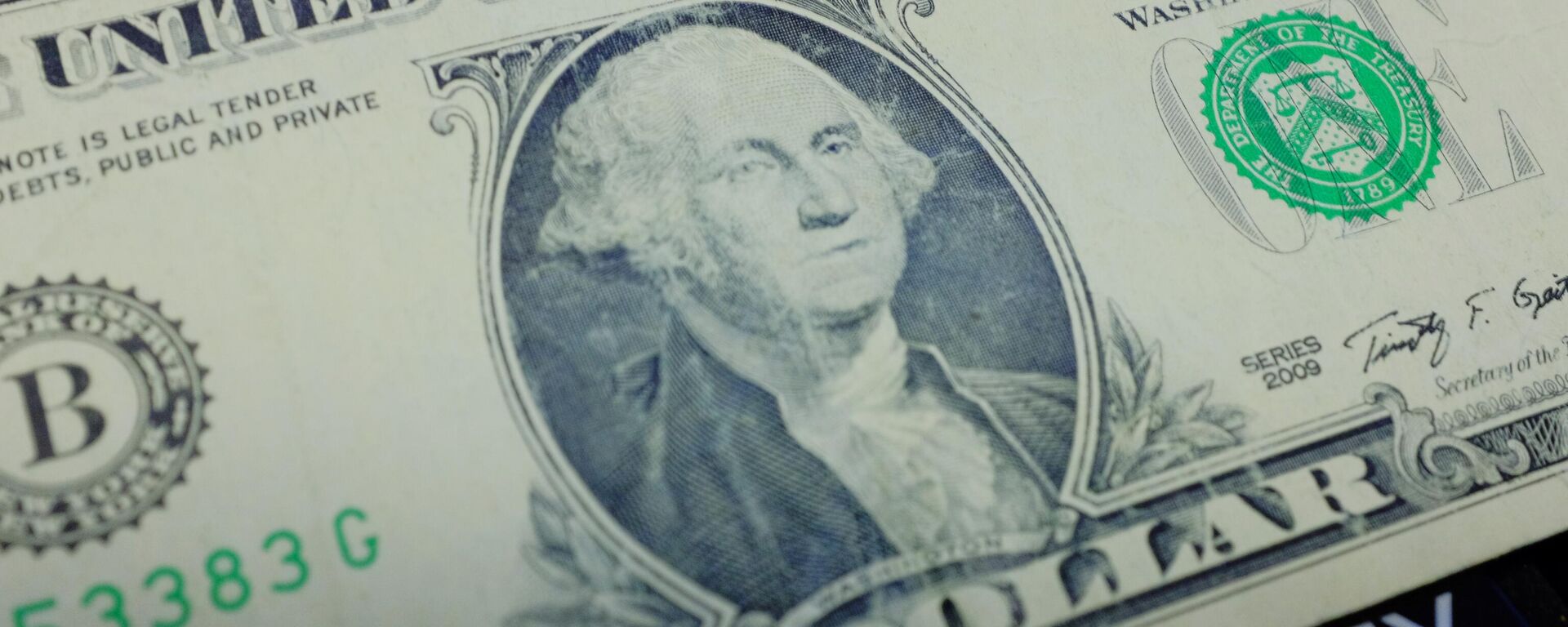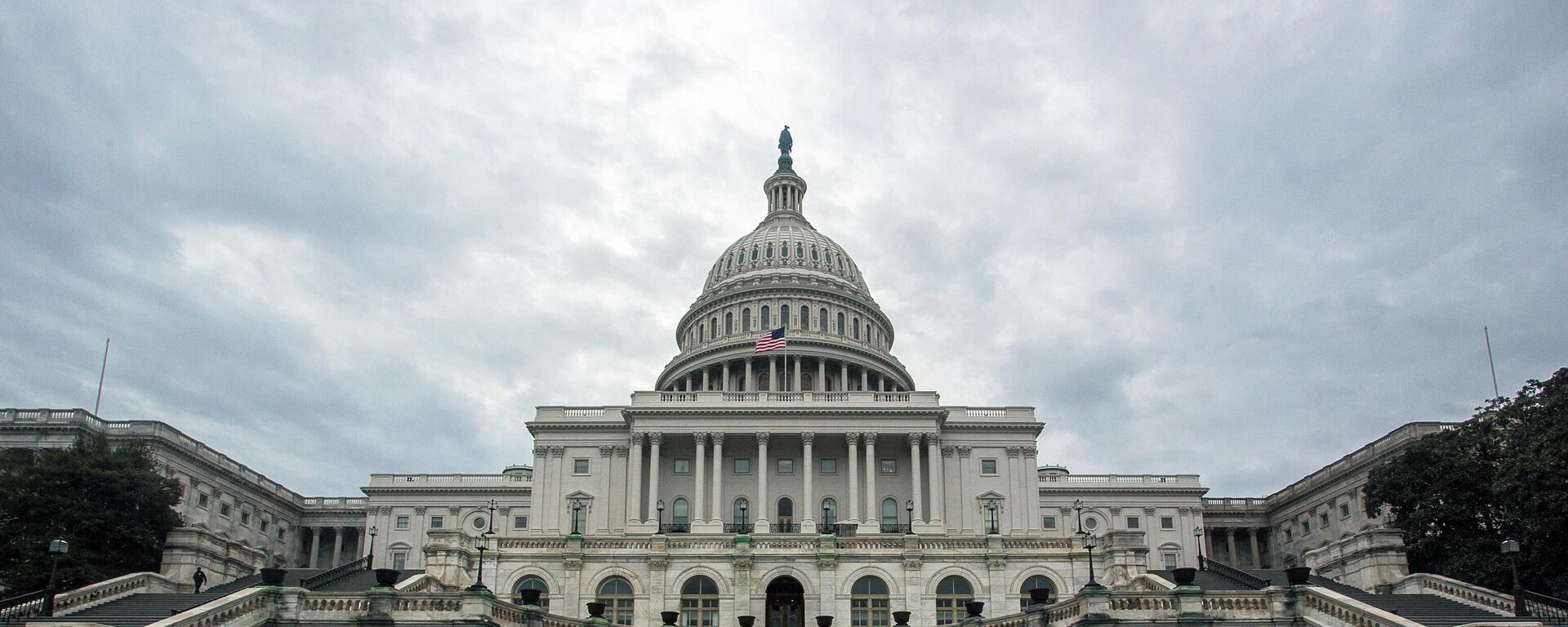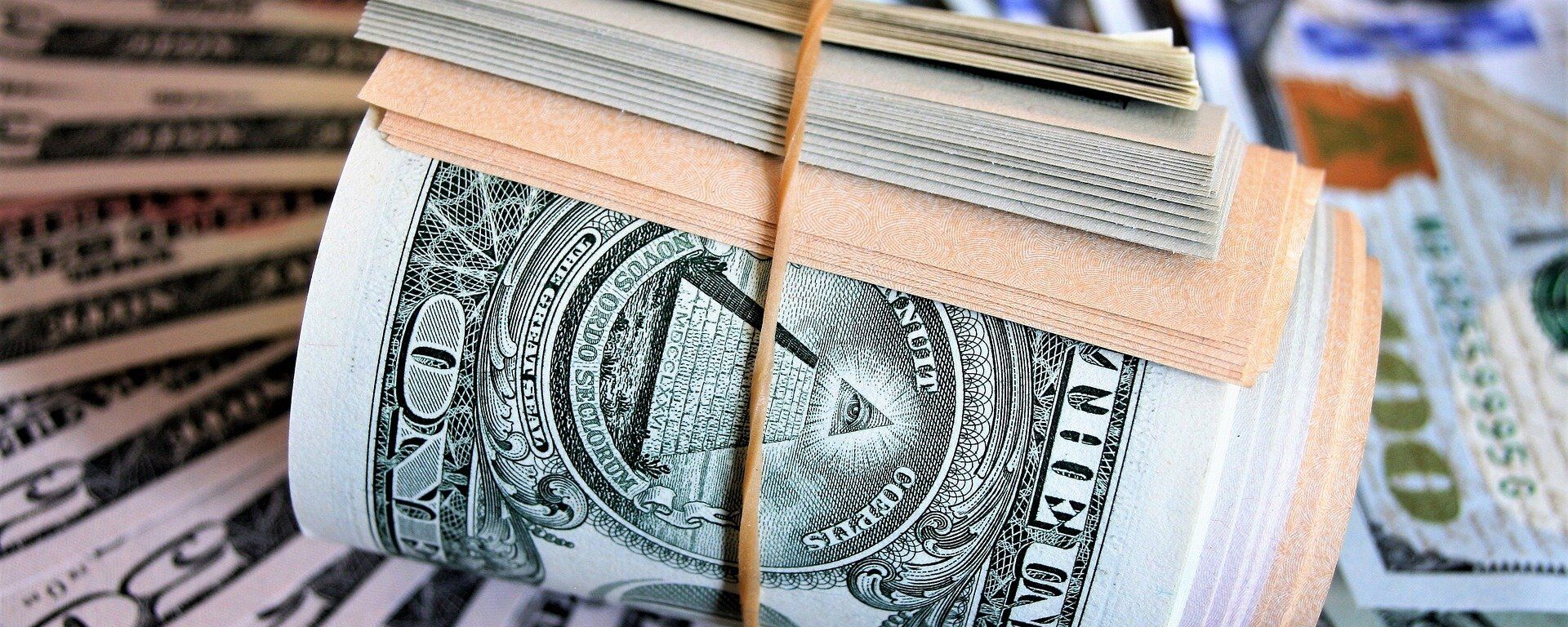‘Bidenomics’ Campaign Branding Conceals Deep Economic Weaknesses
17:29 GMT 29.06.2023 (Updated: 17:39 GMT 29.06.2023)

© AFP 2023 / ANDREW CABALLERO-REYNOLDS
Subscribe
An economist told Sputnik that while the US economy is performing well enough at the moment for it to not be a political liability for the Democrats, its appearances conceal some deep-seated weaknesses that constantly threaten to trigger a downturn.
Speaking at a Chicago event on Wednesday, US President Joe Biden sought to turn the economic recovery under his administration into a campaign pitch with the term “Bidenomics.”
“Today, the US has had the highest economic growth among the world’s leading economies since the pandemic. We’ve added over 13 million jobs, more jobs in two years than any president has added in a four-year term. And folks, that’s no accident - that’s Bidenomics in action,” Biden said.
Biden said his” economic vision” for the United States “grows the economy from the middle out and the bottom up instead of just the top down.”
“When that happens, everybody does well. The wealthy still do. Everybody does well,” the president said. “The poor have a ladder up, and the wealthy still do well. We all do well.”
However, it’s been a rocky year for the US economy so far, with some of the biggest bank failures in history, unemployment slowly creeping upward, and strong inflation that has only recently begun to decline. The Federal Reserve, the country’s central bank, recently paused its march toward higher interest rates and revised its economic projections upward for the rest of the year, but held on to its somber prospects for 2024 and beyond.
On the financial front, many major banks still expect an economic downturn to come, and investors in US Treasury bonds have deepened the so-called “inverted yield curve,” long regarded as the bellwether of a recession on the horizon.
Sergio Rossi, a professor of macroeconomics and monetary economics at the University of Fribourg, Switzerland, told Sputnik that while things seem stable for the moment, there are a number of features of the US economy that will keep it unstable for a long time, retaining the risk that Biden’s claimed successes could begin to evaporate quickly.
“The US economy is still in a difficult situation because of several problems that result from a series of domestic and international factors. The labor market is suffering from both geopolitical tensions and the lack of demand on the market for produced goods and services, which the current US monetary policy stance contributes to aggravate,” Rossi said.
“There is no possibility for the US Federal Reserve to reduce inflationary pressures coming from the supply side through its repeated increases in the targeted rate of interest. In fact, this policy stance further increases the measured rate of inflation, as it induces commercial banks to increase their lending rates of interest, so that small- and medium-sized firms will have to pay more interest when they obtain a new credit line from these banks. If so, these firms will increase their prices, which eventually push up the consumer price level and thereby the measured rate of inflation,” he explained.
“The US economy is not very resilient, also because of the fragility of the banking sector and the related instability of financial markets, which the US monetary policy is contributing to exacerbate: increasing interest rates increases the volume of non-performing loans, putting thereby at stake the stability of the whole financial sector. There is again a risk of a looming global financial crisis in this regard, and neither the US Federal Reserve nor other major central banks can avoid it.”
The country’s low unemployment over the past year has been held up by the Biden administration as proof of the economy’s strength and used to parry claims that a recession is either already happening or likely in the near future. According to the most recent economic data, the unemployment rate is just 3.7% - among the lowest it's ever been.
“In fact, the US labor market is not strong, but rather problematic for the lower and middle class of wage earners, who have been suffering much since the late 1980s, as both the globalization and the deregulation of the US economy increased income and wealth inequalities across this economy, thereby putting a downward pressure on both households’ consumption expenditures and firms’ productive investments,” Rossi told Sputnik.
“This process has slowed down economic growth considerably, which the financialization of the US and global economy has palliated only in part, and with the result of increasing financial fragility and instability of all the countries involved in this process,” he explained. “The global financial crisis that erupted in the fall of 2008, as a result of a default of the US investment bank Lehman Brothers, the pandemic crisis that burst in early 2020, and more recently all the geopolitical tensions across the global economy, have made it plain that wage earners in the lower and middle class are suffering a great deal for a series of problems that they did not originate, as these problems are the result of short-sighted decisions taken by politicians in power, by powerful financial institutions, and by multinational corporations, against the general interest and the common good.”
Rossi said that debt remains “problematic” in the US, both private debt and that held by the US government, especially given the “worrying perspectives of real economic growth in the US and abroad.”
“The level of private debt is even more problematic than the level of government debt, because the latter can be financed through the US Federal Reserve interventions across financial markets, where it may purchase all those bonds the US federal government is selling in order to finance its public deficits,” he explained.
“Private debts are much more difficult to be repaid at maturity, in light of the economic situation and perspective, particularly for the lower and middle-class wage-earners as well as for a number of small- and medium-sized firms that have been suffering from globalization, deregulation, liberalization, as well as financialization – all of which have been exacerbated since the beginning of this century across Western economies.”
“However, owing to the ongoing de-dollarization process in a number of Asian and Latin American countries, the US public debt could become a problem for the US as a whole, since there will be fewer potential buyers of government bonds issued by the US administration to finance its own public deficits. All this could jeopardize the US economy over the medium-to-long run, revealing thereby all its own fragilities that originate in the Bretton Woods agreements signed in July 1944, when the US dollar became the reference currency across the world.”
Financial and geopolitical analyst Tom Luongo told Sputnik that while the US economy is doing better than most pessimists expected it to be with such high interest rates, it is still “deteriorating rapidly at the edges.”
He said that Federal Reserve Chairman Jerome “Powell’s aggressive monetary policy has all major metrics of inflation and credit falling rapidly. We have the resumption of student loan repayment which will take even more money out of the ‘flow’ within the economy.”
“But, at the same time, the US is in better shape than most bears ever thought it could or would be with interest rates this high. So far, this has been a ‘white collar’ labor contraction, and layoffs from that part of the economy don’t always show up in the unemployment statistics,” he observed.
“So this is why the labor market continues to surprise us with how resilient it’s been. This implies two things: 1, that there is still plenty of spending capacity within the economy as people try to figure out what they’ll do next, living off savings, and downsizing their lifestyle; and 2, they will begin looking for lower-paying work in a few months, as they find out they aren’t as in demand as they thought they were.”
As a result, Luongo said delinquencies on mortgages and automotive loans would increase and home prices would drop as people relocate to live within their reduced financial means.
“The reorganization of the US economy is well underway,” he observed, noting that “it won’t show up in the GDP statistics for another quarter at least.”
At the same time, Luongo said that despite the strong labor market, real incomes are continuing to fall because of “Inflation, inflation, inflation.”
“The key word is ‘real’ income, not nominal income. Wages didn’t keep up with inflation, therefore, real incomes dropped sharply.”
“Now, non-core inflation, i.e. food and energy prices, have contributed the most to the CPI [consumer price index] now running at 4.0% rather than much higher,” he explained. “In fact, a lot of that simply comes from the fall in gasoline prices. As long as gas prices stay low - which have been as much a factor of Biden’s draining the Strategic Petroleum Reserve into a peak in US oil production as anything else - then inflation for the bottom half of wage-earners will stabilize, if not go into deflation. This would be a very good thing for the economy. But, I don’t think that can continue indefinitely. The Biden administration put forth its first offer to begin refilling the SPR for August. They put one forth in February and refused all the offers as too high. We’ll see if they do that again and keep draining.”
He noted that the Fed would not stop raising interest rates until inflation slows down more. He noted that the Personal Income Expenditures (PCE) and gross domestic product (GDP) data released earlier this week suggest it’s “very likely” the Fed will skip another rate hike in July, despite remarks suggesting otherwise.
“From these perspectives, Biden has been successful in managing inflation at the low end of the economy. Powell is draining the froth off the top. The net result will be a sincere contraction in 2024,” he said.






